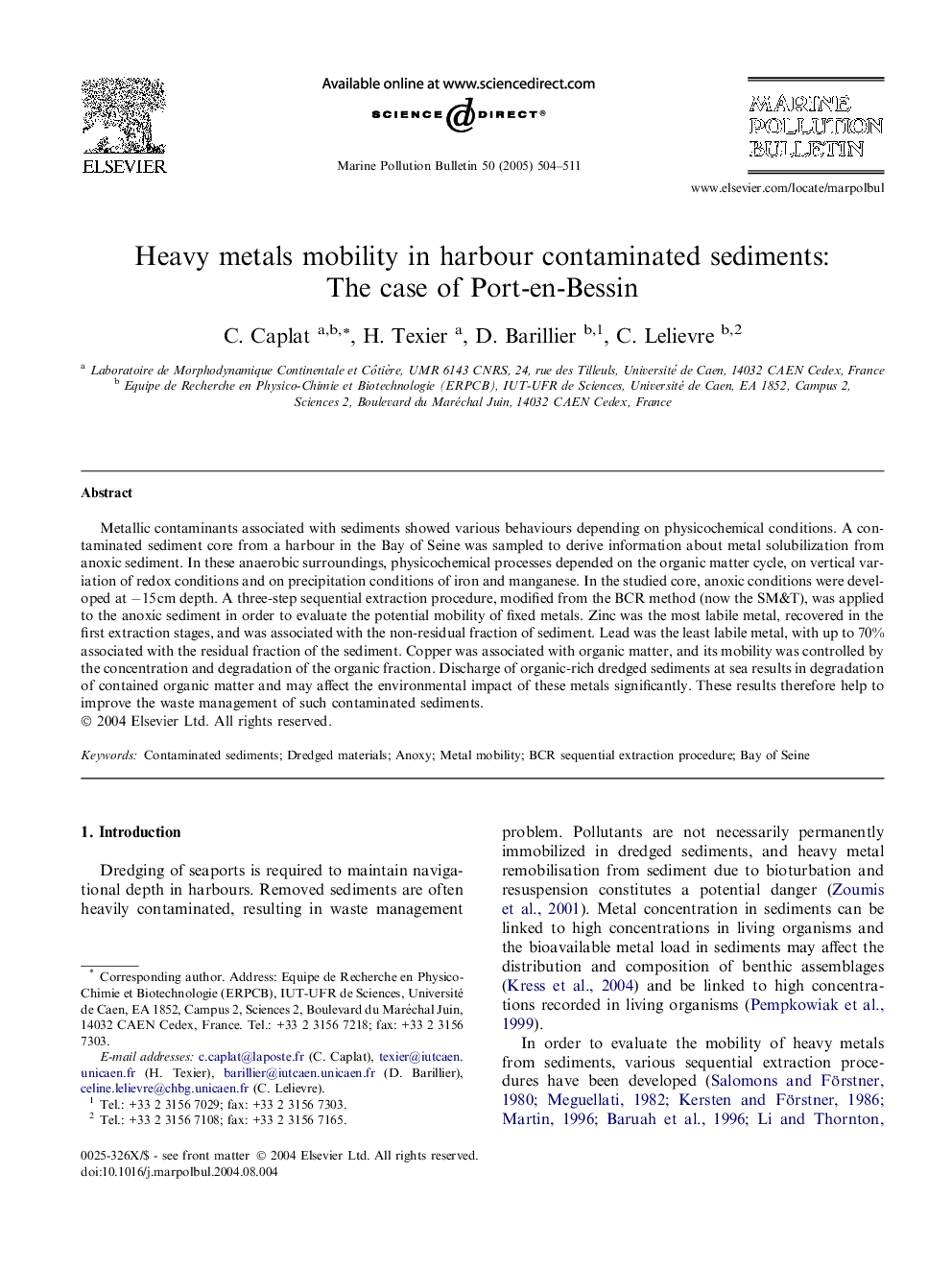| Article ID | Journal | Published Year | Pages | File Type |
|---|---|---|---|---|
| 9465969 | Marine Pollution Bulletin | 2005 | 8 Pages |
Abstract
Metallic contaminants associated with sediments showed various behaviours depending on physicochemical conditions. A contaminated sediment core from a harbour in the Bay of Seine was sampled to derive information about metal solubilization from anoxic sediment. In these anaerobic surroundings, physicochemical processes depended on the organic matter cycle, on vertical variation of redox conditions and on precipitation conditions of iron and manganese. In the studied core, anoxic conditions were developed at â15Â cm depth. A three-step sequential extraction procedure, modified from the BCR method (now the SM&T), was applied to the anoxic sediment in order to evaluate the potential mobility of fixed metals. Zinc was the most labile metal, recovered in the first extraction stages, and was associated with the non-residual fraction of sediment. Lead was the least labile metal, with up to 70% associated with the residual fraction of the sediment. Copper was associated with organic matter, and its mobility was controlled by the concentration and degradation of the organic fraction. Discharge of organic-rich dredged sediments at sea results in degradation of contained organic matter and may affect the environmental impact of these metals significantly. These results therefore help to improve the waste management of such contaminated sediments.
Related Topics
Physical Sciences and Engineering
Earth and Planetary Sciences
Oceanography
Authors
C. Caplat, H. Texier, D. Barillier, C. Lelievre,
